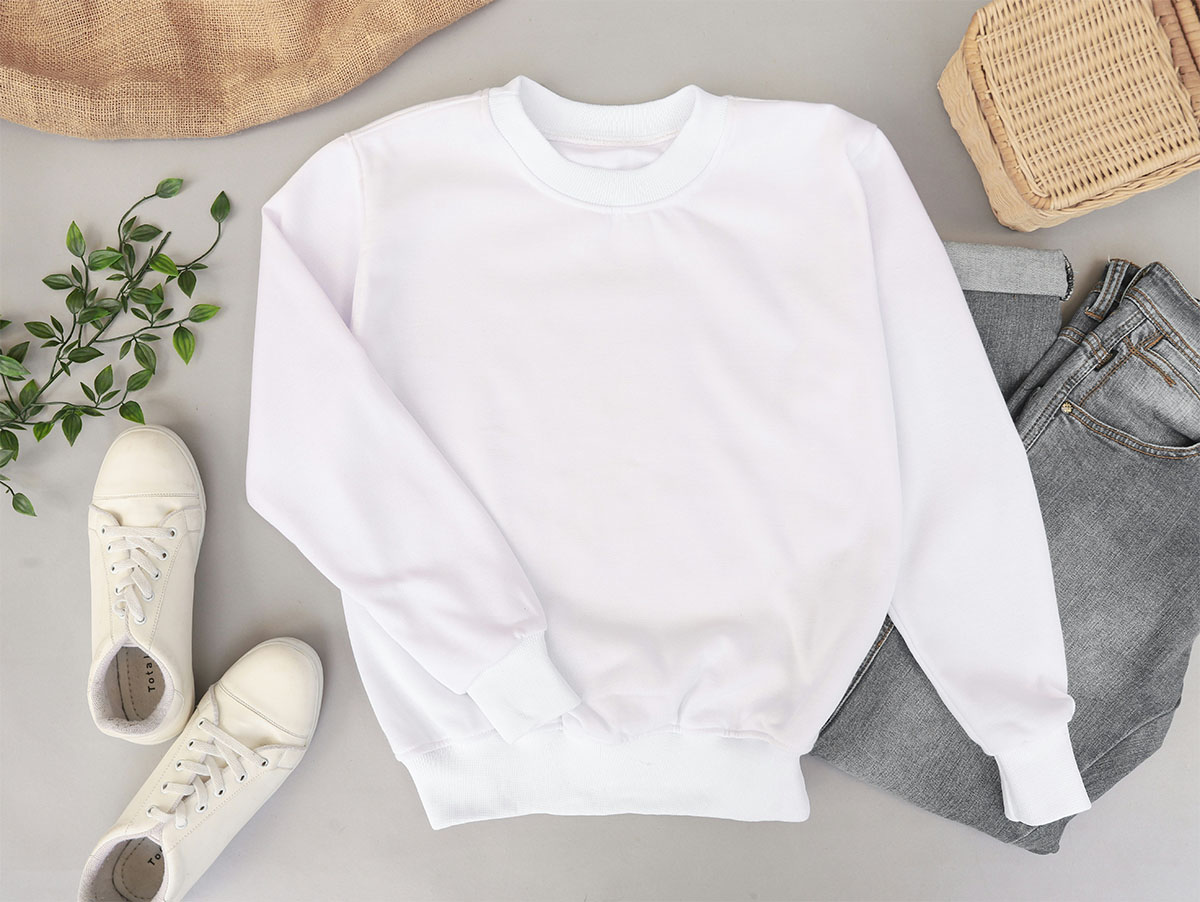For over 15 years, I’ve been in the eCommerce game, helping people turn ideas into businesses. Starting a clothing brand? It’s one of the most exciting ventures you can pursue. But it’s also one of the most misunderstood. People think they need huge budgets, design degrees, or a ton of inventory right out of the gate.
That’s not true.
With the right plan, you can start small, test the waters, and grow into something meaningful. I’m here to guide you step-by-step and show you how to get it done.
How to Start a Clothing Brand in 9 Steps
- Find Your Niche (or Die Trying)
- Choose Your Business Model
- Design Smart (Even If You’re Not a Designer)
- Build a Brand People Love
- Start Small with Product Development
- Launch Your Online Store
- Market Your Brand Like a Pro
- Deliver an Amazing Customer Experience
- Create a Clothing Business Plan
Step 1: Find Your Niche
Let me be blunt: if you’re trying to sell clothes to everyone, you’re setting yourself up for failure. A niche is what makes people care about your brand.
It’s the specific group of people you’re designing for and what makes your clothing stand out.
Why a Niche Matters
Big brands like H&M and Zara dominate the mass market because they have billions to spend on marketing, inventory, and supply chains. You can’t compete with that. But what you can do is serve a specific audience better than anyone else.
For example:
- Streetwear for Gamers: Combine bold designs with gaming culture.
- Sustainable Activewear for Women: Affordable, eco-friendly gym clothes.
- Retro Kids’ Clothing: Nostalgic styles for kids inspired by the ‘80s and ‘90s.
How to Define Your Niche
- Start with What You Love: What are you passionate about? If you don’t care about your niche, it’ll show.
- Research the Market: Look at competitors on Etsy, Instagram, and Shopify. Are they succeeding? If yes, what gaps can you fill?
- Ask Your Audience: Use Instagram polls, Reddit threads, or even ask your friends to see if your idea resonates.
Once you’ve picked your niche, write it down and make it specific. For example, instead of “men’s t-shirts,” try “bold graphic tees for skaters who love punk music.”
A clear niche makes everything—from branding to marketing—easier.
Step 2: Choose Your Business Model
This is one of the most important decisions you’ll make. Your business model determines how you’ll sell your clothes, handle inventory, and make money. Don’t skip this step.

Option 1: Print-On-Demand (POD)
If you’re just starting, POD is the simplest, most affordable way to launch a clothing brand. Here’s how it works:
- You upload your designs to a POD platform like Printful or Printify.
- When a customer orders, the platform prints and ships the item for you.
- You pay the platform a base price, and the rest is your profit.
Why Choose POD?
- No Inventory Needed: You don’t need to buy clothes upfront.
- Low Start-Up Costs: You only pay when you sell.
- Scalability: You can offer dozens of designs without worrying about stock.
How to Get Started with POD:
- Sign up for a POD platform.
- Sync it with your Shopify store (or Etsy).
- Start with 3-5 designs to test the market.
Option 2: Reselling Wholesale Clothing
This option is perfect if you want to curate and sell existing clothing instead of creating your own designs.
- Find a supplier (like Faire, Tundra, or Alibaba) and buy clothing in bulk.
- Add your branding (like hang tags or packaging).
- Sell the items at a markup.
Why Choose Wholesale?
- Higher Margins: Bulk buying reduces your cost per item.
- Better Quality Control: You can inspect items before selling.
What to Watch Out For:
You’ll need to spend money upfront and have space to store inventory. If an item doesn’t sell, you’re stuck with it.
Option 3: Custom Manufacturing
This is the “big leagues” of clothing brands. You design everything from scratch and work with a manufacturer to bring your vision to life.
- Create a tech pack (a detailed design blueprint).
- Source materials and fabrics.
- Work with a manufacturer to produce your pieces.
Why Choose Custom Manufacturing?
- Full Creative Control: You decide the fit, fabric, and design.
- Better Margins: You’re not paying a middleman.
What to Watch Out For:
This option is expensive and time-consuming. It’s best for people with a clear vision and some experience in the industry.
Step 3: Design Smart (Even If You’re Not a Designer)
You don’t need a design degree to create awesome clothing. What you do need is a clear vision and the right tools.
How to Start Designing:
- DIY Tools: Use Canva or Adobe Illustrator for simple graphics. Canva is beginner-friendly, while Illustrator gives you more precision.
- Hire a Freelancer: Platforms like Fiverr and Upwork are goldmines for affordable designers. Share your ideas and let them do the work.
- Steal Like an Artist: Look at brands you love and adapt their vibe to your niche (don’t copy, but use them as inspiration).
Test Your Designs:
Start with 3-5 designs. These could be t-shirts, hoodies, or even tote bags. Order samples to make sure the quality matches your expectations.
Pro Tip: Post your designs on social media before launching. Let your audience vote on their favorites.
This not only builds hype but also helps you figure out what will sell.
Step 4: Build a Brand People Love
Your brand isn’t just your logo or your name—it’s the entire experience your customers have. It’s the story, the vibe, and the emotional connection people feel when they see your products.
How to Build Your Brand:
- Create a Brand Story: Why are you starting this brand? Share your journey and what makes your brand unique.
- Develop a Visual Identity: Pick a color palette, fonts, and photography style that match your vibe. Tools like Coolors.co can help you choose colors.
- Stay Consistent: Use the same logo, tone, and visuals across your website, social media, and packaging.
Why Branding Matters:
Strong branding turns customers into fans. People will pay more for products that align with their identity. Think about Supreme or Nike—their branding is half the reason people buy.
Step 5: Launch Your Online Store
Your store doesn’t need to be fancy—it just needs to be live. If you’re using POD, Shopify is a great platform to start with. If you’re doing handmade or vintage clothing, Etsy might be a better fit.
What to Include on Your Website:
- High-Quality Photos: Use mockups or hire a photographer for lifestyle shots.
- Product Descriptions That Sell: Don’t just list features—focus on benefits. For example, “Ultra-soft fabric for all-day comfort” is better than “100% cotton.”
- Clear Policies: Add pages for shipping, returns, and FAQs to avoid customer confusion.
Step 6: Market Your Brand Like a Pro
You could have the most amazing designs in the world, but if no one knows your brand exists, it won’t matter. Marketing is where you go from an idea to sales.
But here’s the thing: you don’t need to spend thousands of pounds on ads right away. When you’re just starting, focus on organic (free) methods, build a community, and let your brand grow naturally.
Once you’ve made a few sales and learned what resonates with your audience, you can reinvest into paid ads to scale. Here’s how to approach marketing like a pro, step-by-step.
Start with Organic Marketing (It’s Free and Powerful)
- Social Media Is King
Platforms like Instagram, TikTok, and Pinterest are goldmines for clothing brands. People scroll these apps to discover new trends and styles. Show up where your customers are already spending time.What to Post:- Behind-the-scenes content (design process, packaging orders, photo shoots).
- Lifestyle shots of your products in action (e.g., someone wearing your hoodie at the beach).
- Customer testimonials or reposts from happy buyers.
- Trending content (use viral sounds on TikTok or jump on seasonal trends).
- Collaborate with Micro-Influencers
Micro-influencers (5,000–50,000 followers) are budget-friendly and have loyal, engaged audiences. DM influencers who align with your niche and offer free products in exchange for a post or shoutout.Example:
If your niche is eco-friendly fashion, partner with influencers who focus on sustainability and have followers who care about the same values. - Email Marketing Is Underrated
Start collecting emails from day one, even if you don’t have a big audience yet. Offer a small incentive (like 10% off their first order) in exchange for email signups.Why Email Works:- It’s free to send.
- You’re not at the mercy of social media algorithms.
- It’s perfect for sharing sales, new arrivals, and exclusive discounts.
Step Into Paid Marketing Once You’ve Tested the Waters
Organic marketing is great, but ads will help you scale. When you’re ready to invest, start small and target your audience with precision.
- TikTok Ads
TikTok is one of the most powerful platforms for reaching younger audiences. Start by boosting a popular TikTok post or creating a short video ad showcasing your product. Keep it fun, fast-paced, and visually engaging. - Instagram & Facebook Ads
With Facebook’s ad manager, you can create highly targeted campaigns based on age, location, interests, and behaviors. Run ads to people who follow similar brands or fit your ideal customer profile.Pro Tip: Retarget people who’ve visited your site but didn’t buy. A simple “Still thinking about this?” ad can bring them back. - Google Shopping Ads
If your store is live and optimized, Google Shopping Ads can help people discover your brand when they’re searching for similar products. For example, if someone searches “bold graphic t-shirts,” your product can pop up in their search results.
Engage with Your Audience Daily
Marketing isn’t just about pushing content; it’s about building relationships. Reply to comments, DMs, and even tags on social media. The more accessible and friendly you are, the more trust you’ll build with potential customers.
What This Looks Like:
- When someone comments on a post, reply with a thoughtful answer or even a little humor.
- If someone tags your brand in a post, repost it and thank them for supporting you.
These small gestures create a loyal customer base that will keep coming back.
Step 7: Deliver an Amazing Customer Experience
Here’s a secret I’ve learned after watching hundreds of brands grow (and fail): great customer service can make or break your brand. A customer who has a great experience will tell their friends and come back for more. A customer who has a bad experience? They’ll leave a bad review and never shop with you again.
This step is all about going above and beyond to make your customers feel valued—from the moment they click “buy” to the second they open your package.
Make Packaging an Experience
Think about the last time you ordered something online. Did it feel special when you opened it, or did it feel like just another box? Packaging is your chance to leave a lasting impression.
- Branded Packaging: Use eco-friendly mailers, tissue paper with your logo, or custom stickers to make your brand memorable. A simple touch like a handwritten thank-you note can make a huge difference.
- Extras That Delight:
- Include small freebies like stickers or discount codes for their next purchase.
- Add a QR code that links to a “thank you” video or a behind-the-scenes look at your process.
These little touches cost almost nothing but leave customers feeling valued and excited about your brand.
Streamline Shipping
Fast, reliable shipping is one of the easiest ways to make your customers happy. No one wants to wait weeks for their order to arrive.
How to Nail Shipping:
- Use a reliable service like ShipStation to manage and track orders.
- Be upfront about shipping times and costs. If you offer free shipping, make it clear what the minimum purchase is to qualify.
- Communicate at every step: Send confirmation emails, shipping updates, and tracking numbers automatically.
If something goes wrong (like a late delivery), take responsibility and offer a solution—refunds, store credit, or even an apology can go a long way.
Make Returns Hassle-Free
Returns are inevitable, especially with clothing. Instead of making it a pain for your customers, turn it into an opportunity to impress them.
What to Do:
- Have a clear return policy that’s easy to find on your website.
- Offer free or low-cost returns if possible—it removes friction from the buying process.
- Respond to return requests quickly, and thank the customer for giving your brand a try.
Pro Tip: Follow up with customers who return items. Ask for feedback about what went wrong. Their input can help you improve your products or sizing guides.
Build Loyalty Through Communication
After the sale, don’t just disappear. Keep your customers engaged with your brand by staying in touch.
Here’s How:
- Follow Up with Emails: Send a thank-you email after every purchase. A few days later, follow up to ask if they’re happy with their order.
- Exclusive Offers for Returning Customers: Reward loyalty with discounts, early access to new products, or a special “VIP” email list.
- Encourage Reviews: Politely ask satisfied customers to leave reviews on your site or social media. Positive reviews build trust and encourage new customers to buy.
Why This Matters
Your customer experience is just as important as your designs, if not more. People don’t just buy products—they buy how those products make them feel.
By delivering an exceptional experience, you’re not just making a sale; you’re creating lifelong customers who’ll stick with you as your brand grows.
Step 8: Create a Clothing Business Plan
A lot of people dive headfirst into starting a clothing brand without a plan—and that’s a recipe for disaster. A clothing business plan isn’t just a boring document; it’s your roadmap.
It keeps you focused, organized, and prepared to make smart decisions. Plus, if you ever want to pitch your business to investors or apply for funding, you’ll need one.
What to Include in Your Business Plan:
- Your Vision and Goals:
- Why are you starting this brand? What do you want to achieve in the next 1, 3, or 5 years?
- Example: “To create a sustainable clothing line that generates £50,000 in revenue within the first year.”
- Target Market:
- Who are your ideal customers? What do they care about?
- Example: “Young professionals aged 20-35 who value minimalist designs and sustainability.”
- Product Offering:
- What type of products will you sell, and how do they stand out?
- Example: “Eco-friendly activewear made from recycled materials, featuring bold prints.”
- Pricing and Costs:
- How much will your products cost to produce, and how much will you sell them for?
- Calculate your profit margins to ensure you’re making money after production, shipping, and marketing expenses.
- Marketing Strategy:
- How will you promote your brand? List the platforms and methods you’ll focus on (e.g., TikTok, email marketing, influencer collaborations).
- Sales Channels:
- Where will you sell your products? Online only, or will you explore pop-ups and markets?
- Example: Start with Shopify and Etsy, then expand to pop-ups and wholesale opportunities.
- Budget and Cash Flow:
- How much money will you need to launch, and how will you spend it?
- Example: Allocate £500 for initial designs, £300 for a website, and £200 for marketing ads.
A solid business plan keeps you from wasting money on things that don’t align with your goals. It also helps you stay calm and organized as your brand grows.
Step 9: Plan Your Collections Around Fashion Seasons
If you want your clothing brand to feel professional and stand out, planning collections around fashion seasons is a game-changer. Even if you’re starting small, creating seasonal drops keeps your brand fresh and gives customers a reason to come back.
What Are Fashion Seasons?
The traditional fashion calendar revolves around four main seasons:
- Spring/Summer (SS): Launch lightweight, colorful designs for warmer weather.
- Autumn/Winter (AW): Focus on cozy, warm, and neutral-toned clothing for colder months.
- Resort/Pre-Spring: Offer vacation-ready styles like swimwear and flowy fabrics.
- Pre-Fall: A transition collection between summer and fall.
You don’t need to follow all four seasons if you’re just starting out. Many beginner brands focus on two collections a year (Spring/Summer and Autumn/Winter) to keep things manageable.
How to Plan Your Seasonal Drops:
- Research Trends Early:
- Start looking at trends 6-12 months before launching a collection. Use Pinterest, fashion blogs, and runway shows for inspiration.
- Check out platforms like WGSN (if you’re serious about trend forecasting) or browse TikTok for what’s trending now.
- Consider Functionality:
- What does your audience need each season? Think lightweight and breathable fabrics for summer and thicker, layered options for winter.
- Create Themes:
- Give each collection a unique vibe. For example, your summer collection could be inspired by bold tropical prints, while your winter line might focus on muted tones and cozy textures.
- Test Small Before Going Big:
- If you’re nervous about launching an entire seasonal collection, start with a capsule collection—a smaller, curated group of items (e.g., 5-10 pieces).
Why Fashion Seasons Work:
- Builds Anticipation: When customers know new products are coming, they’ll be excited to shop.
- Creates a Sense of Urgency: Seasonal items are perceived as limited-time offers, encouraging people to buy before they’re gone.
- Keeps Your Brand Fresh: Dropping new collections regularly keeps your audience engaged and loyal.
Final Thoughts
Starting a clothing brand isn’t just about selling t-shirts. It’s about creating something meaningful and connecting with your audience. Start small, focus on quality, and grow at your own pace.
And remember, every big brand started where you are now—with one idea, a little hustle, and a willingness to learn.





